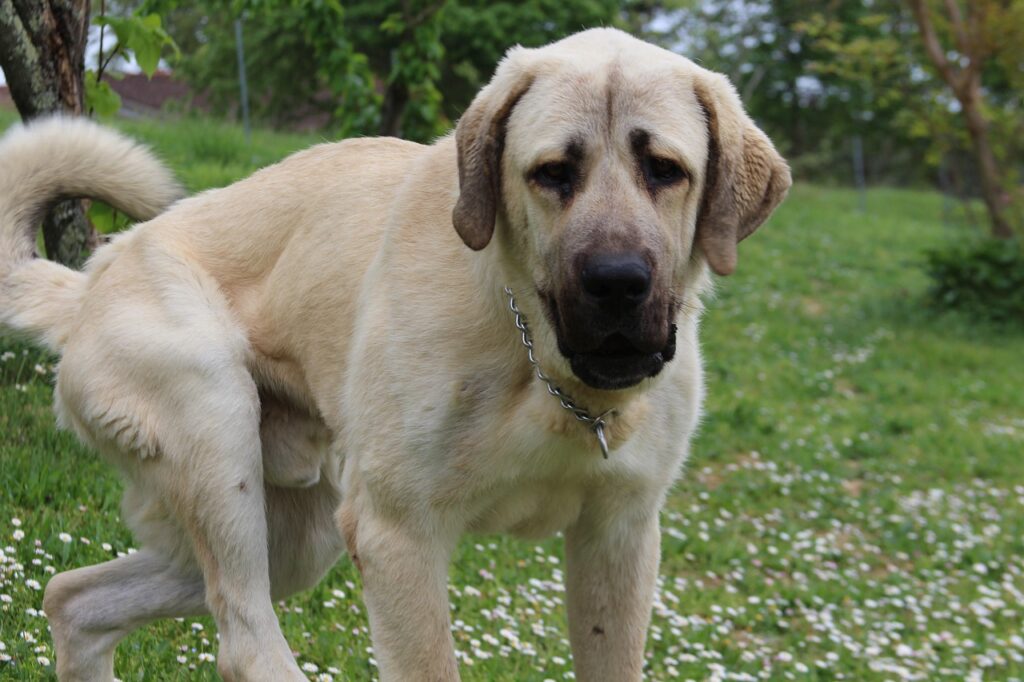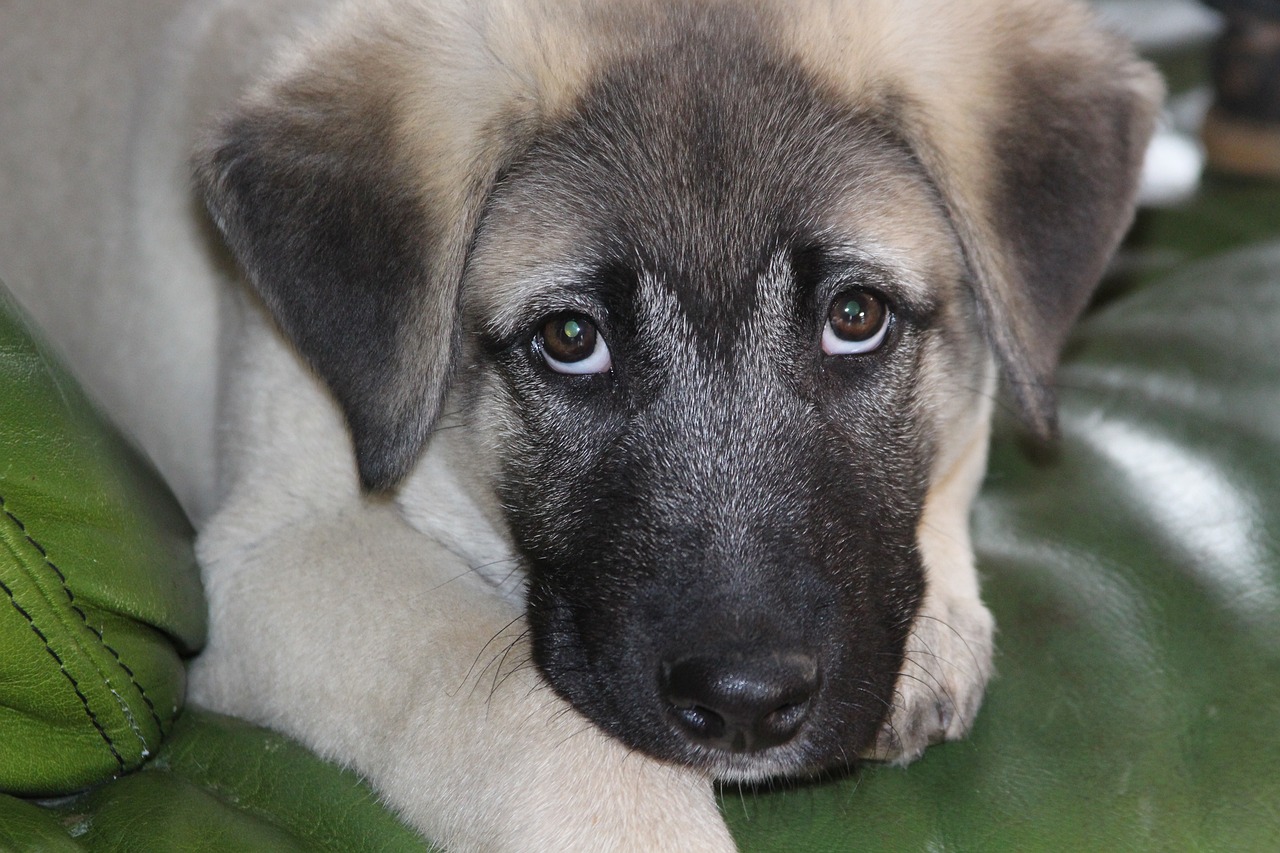In this article, you will discover the fascinating history of the Kangal Shepherd, a breed known for its remarkable characteristics and strong temperament. Originating from Turkey, the Kangal Shepherd has a lifespan of around 12-15 years and a reputation for being a healthy breed. Also known by other names such as the Anatolian Shepherd Dog, this majestic creature possesses a striking appearance, with a muscular build and a thick coat that comes in various colors. Renowned for its protective nature, the Kangal Shepherd is often utilized as a livestock guardian, showcasing its exceptional skills in activities such as herding and protecting the flock. With the right training, this intelligent breed is capable of learning and excelling in various tasks. Whether it’s their size, coat and color, or the different variations within the breed, the Kangal Shepherd is a breed that continues to captivate dog enthusiasts worldwide.
History
Origins in Turkey
The Kangal Shepherd is a breed with deep roots in the history of Turkey. Believed to have originated in the Sivas region of Turkey, the Kangal Shepherd has been used for centuries to guard livestock such as sheep and goats. This ancient breed has been relied upon by Turkish shepherds for their loyalty, protective nature, and impressive size.
Ancient roots
The Kangal Shepherd’s history can be traced back thousands of years, making it one of the oldest breeds in the world. The ancestors of the Kangal Shepherd can be found in ancient Assyria, where they were known as “Tahtawi.” These dogs were highly regarded for their ability to protect livestock from predators, a trait that remains prominent in the breed to this day.
Role as a livestock guardian
Throughout history, the Kangal Shepherd has been an invaluable asset to Turkish shepherds. Their main role has been that of a livestock guardian, protecting sheep and goats from predators such as wolves and bears. The breed’s loyal and protective nature, coupled with their impressive size and strength, made them highly effective in deterring potential threats to the flocks.
Recognition as a distinct breed
The Kangal Shepherd was officially recognized as a distinct breed by the Turkish Kennel Club in 1989. This recognition solidified the breed’s unique characteristics and importance as a cultural icon in Turkey. Since then, the Kangal Shepherd has gained recognition and popularity around the world for its exceptional working abilities and remarkable temperament.
Lifespan
Average lifespan
On average, the Kangal Shepherd has a lifespan of 12 to 15 years. This is relatively long for a large breed dog, and it showcases the overall good health and vitality of the Kangal Shepherd when properly cared for.
Factors influencing lifespan
Several factors can influence the lifespan of a Kangal Shepherd. Proper nutrition, regular exercise, and routine veterinary care all play crucial roles in ensuring a long and healthy life for your Kangal Shepherd. Additionally, genetics and the presence of any underlying health conditions can also impact their lifespan. It’s important to be aware of these factors and provide the necessary care to promote longevity in your beloved Kangal Shepherd.
Health
Common health issues
While generally healthy, the Kangal Shepherd can be prone to certain health issues. These include hip dysplasia, a condition where the hip joint doesn’t develop properly and can lead to lameness and pain. Bloat, a potentially life-threatening condition, can also affect this breed. Other common health issues to be aware of include hypothyroidism, allergies, and taurine deficiency.
Genetic predispositions
Genetic predispositions can influence the health of Kangal Shepherds. It’s important to work with a reputable breeder who conducts health screenings on their breeding dogs to minimize the risk of passing on genetic conditions. Responsible breeding practices can greatly reduce the likelihood of health issues in Kangal Shepherds.
Recommended health screenings
To ensure the overall health and well-being of your Kangal Shepherd, it is recommended to have regular health screenings conducted. These screenings may include hip and elbow evaluations, thyroid function tests, and heart screenings. Regular check-ups with a trusted veterinarian can help catch any potential health issues early on and ensure appropriate treatment.
Tips for maintaining good health
To maintain good health in your Kangal Shepherd, it’s important to provide regular exercise, a balanced diet, and routine veterinary care. Regular grooming, including brushing their double coat, will help keep their fur healthy and reduce the risk of matting. Ensuring a clean and comfortable living environment, along with plenty of mental stimulation, will contribute to their overall well-being.
Other Names
Alternate names for Kangal Shepherd
The Kangal Shepherd is known by various names in different parts of the world. In Turkey, the breed is commonly referred to as “Köpek” or “Karabash.” In other regions, they may be called “Anatolian Shepherd” or “Anatolian Karabash.”
Regional variations in names
Just as there are regional variations in the names used for the Kangal Shepherd, there can also be variations in the breed’s appearance and temperament. Regional variations can result from different breeding practices and the specific needs of the local environment. Despite these variations, the Kangal Shepherd’s core characteristics, such as loyalty, protectiveness, and intelligence, remain present in all variations of the breed.
Characteristics
Loyal and protective nature
One of the defining characteristics of the Kangal Shepherd is its exceptional loyalty and protective nature. Known for their strong bond with their families, Kangal Shepherds will go to great lengths to protect their loved ones. Whether it’s their human family or the livestock they guard, Kangal Shepherds are always vigilant and ready to defend.
Strong instincts as a guardian
The Kangal Shepherd’s instincts as a guardian are deeply ingrained. These instincts are honed through generations of breeding for their livestock protection abilities. They possess a natural territorial drive and a strong sense of responsibility when it comes to guarding their flocks. This inherent instinct makes them excellent protectors in any environment.
Intelligence and problem-solving abilities
In addition to their protective nature, Kangal Shepherds are highly intelligent dogs. This intelligence allows them to analyze situations and make decisions accordingly. This problem-solving ability, combined with their loyalty, makes them valuable working dogs and loving companions.
Adaptability to different environments
Despite their origins as livestock guardians in the rugged landscapes of Turkey, Kangal Shepherds are surprisingly adaptable to different environments. While they excel in rural settings, they can also thrive in suburban or even urban environments. As long as their exercise and mental stimulation needs are met, Kangal Shepherds can adapt to various living situations.
Appearance
Powerful and muscular body
The Kangal Shepherd’s physical appearance is both powerful and muscular. With a robust build and a strong bone structure, these dogs exude strength and athleticism. Their well-developed musculature enables them to perform their duties as livestock guardians effectively.
Distinctive facial features
The Kangal Shepherd has a distinctive facial appearance that sets them apart from other breeds. They have a large head with a broad skull and a strong jaw. Their muzzle is moderately long and tapers towards the nose, giving them an alert and attentive expression.
Erect ears and almond-shaped eyes
One of the striking features of the Kangal Shepherd is their erect ears, which stand tall and help them perceive sounds from afar. Their almond-shaped eyes, usually dark in color, convey intelligence and thoughtfulness.
Double-coated fur for protection
The Kangal Shepherd has a double-coated fur that serves as protection against various weather conditions and potential threats. The outer coat is coarse and dense, while the undercoat is soft and insulating. This double coat helps them withstand the elements and provides them with an added layer of defense during confrontations.
Activities
Traditional role as a livestock guardian
The Kangal Shepherd’s traditional role as a livestock guardian is deeply embedded in their instincts and temperament. Their natural desire to protect and their ability to make sound decisions make them highly effective in safeguarding livestock from predators. This traditional role is still relevant today, and many Kangal Shepherds continue to fulfill this purpose.
Suitability for outdoor activities
Due to their size, strength, and endurance, Kangal Shepherds are well-suited for outdoor activities. They enjoy exploring and can thrive in environments that provide them with ample space to roam. Engaging them in activities such as hiking, jogging, or playing fetch can help meet their exercise needs and keep them mentally stimulated.
Exercise and mental stimulation needs
Kangal Shepherds have moderate exercise needs. Daily walks, along with ample opportunities to run and play, are essential to keep them physically fit and mentally stimulated. Providing them with interactive toys, food puzzles, and obedience training sessions can help exercise their minds and prevent boredom.
Training
Importance of early socialization
Early socialization is crucial for Kangal Shepherds. Exposing them to various people, animals, and environments from a young age helps them develop into well-rounded dogs. Positive experiences during socialization can contribute to their overall confidence and ability to adapt to different situations.
Positive reinforcement training methods
Kangal Shepherds respond well to positive reinforcement training methods. Reward-based training, using treats, praise, and toys, can help motivate them and reinforce desired behaviors. Their intelligence and eagerness to please make them quick learners and responsive to positive training techniques.
Challenges in training due to independence
Kangal Shepherds, like many primitive and working breeds, have an independent streak. This independence can present unique challenges during training. Consistency, patience, and firm but fair leadership are crucial when training a Kangal Shepherd. Establishing yourself as a calm and confident leader will help them understand their role and expectations.
Professional training options
For owners who may need additional guidance, professional training options are available. Working with a certified dog trainer who has experience with large, protective breeds can help address specific training challenges and provide valuable guidance. Professional training can help ensure that your Kangal Shepherd becomes a well-behaved and socialized companion.
Size
Average height and weight
The Kangal Shepherd is a large breed, with males typically standing between 28 to 32 inches at the shoulder and weighing between 110 to 145 pounds. Females are slightly smaller, usually measuring between 25 to 29 inches in height and weighing between 90 to 120 pounds.
Comparison with other similar breeds
When comparing the Kangal Shepherd with other similar breeds, such as the Anatolian Shepherd and the Great Pyrenees, the Kangal Shepherd is generally larger and more muscular. While all three breeds share common traits as livestock guardians, the Kangal Shepherd has distinct physical and temperament characteristics that set it apart.

Temperament
Gentle and calm nature with family
Despite their protective instincts, Kangal Shepherds have a gentle and calm nature when interacting with their families. They are known for forming strong bonds and are especially gentle and patient with children. This loving and loyal nature makes them excellent family dogs.
Protective instincts towards strangers
The Kangal Shepherd’s protective instincts extend beyond their family. They are naturally suspicious of strangers and tend to be reserved until they’ve established trust. Once a Kangal Shepherd accepts someone as part of its trusted circle, it will fiercely protect them from any perceived threats.
Compatibility with other pets
Proper socialization and gradual introduction are key when introducing a Kangal Shepherd to other pets. With proper socialization, Kangal Shepherds can coexist peacefully with other pets, especially if they have been raised together. However, their protective nature may sometimes translate into assertiveness with other dogs, particularly those of the same sex or similar temperament.
Advice for potential owners
Potential owners considering a Kangal Shepherd should be prepared for a dog with strong guarding instincts. They require careful socialization, firm but gentle training, and regular exercise to thrive. Additionally, their size and protective nature may not make them suitable for first-time dog owners or individuals who are not experienced with large, independent breeds. However, for those who understand the breed’s temperament and have the time and dedication to invest in proper training and care, the Kangal Shepherd can be a truly rewarding and loyal companion.
